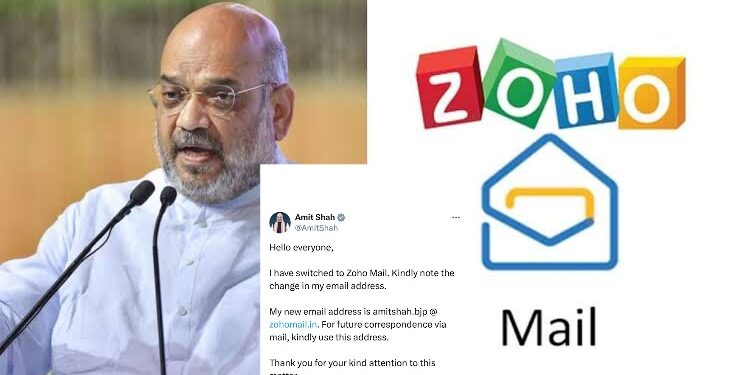Union Home Minister Amit Shah announced on Wednesday that he has switched to Zoho Mail for his official communication. He also urged people to use his new Zoho Mail address for any official correspondence.
The move has drawn national attention, as more government officials and users are migrating from Google’s Gmail to the homegrown Zoho platform, known for its ad-free and privacy-focused services.
Zoho Mail Gains Momentum
Zoho Mail, developed by Indian tech company Zoho Corporation, has seen a surge in popularity after multiple Union ministers endorsed it.
Union Ministers Ashwini Vaishnaw, Dharmendra Pradhan, and Piyush Goyal have also begun using Zoho for their official work. Vaishnaw confirmed that his entire ministry’s communication has shifted to the platform.
The transition comes amid a growing push for digital self-reliance and adoption of ‘Made in India’ technology solutions.
Arattai App: Zoho’s Alternative to WhatsApp
Alongside Zoho Mail, the company’s Arattai app is also trending on social media. Many see it as Zoho’s answer to Meta-owned WhatsApp, offering end-to-end encryption and data privacy features tailored for Indian users.
How to Switch from Gmail to Zoho Mail
If you want to move your emails from Gmail to Zoho Mail, here’s a step-by-step guide:
-
Create an Account:
Visit Zoho Mail’s website and sign up for a free or paid plan based on your requirements. -
Enable IMAP in Gmail:
Go to Gmail settings → Forwarding and POP/IMAP → Enable IMAP.
This allows Zoho to access your Gmail data securely. -
Use Zoho Mail Migration Wizard:
Log in to Zoho Mail, go to Settings → Import/Export → Migration Wizard.
This tool helps transfer your Gmail emails, contacts, and attachments without data loss. -
Enable Email Forwarding:
Turn on forwarding in Gmail so that all future messages are delivered directly to your Zoho inbox. -
Inform Your Contacts:
Notify your friends, colleagues, and clients about your new Zoho Mail ID and update it wherever needed.
Why the Shift Matters
Zoho’s rise represents a broader movement toward indigenous digital solutions. By encouraging the use of local tech, officials aim to promote data sovereignty, user privacy, and economic growth within India’s IT ecosystem.




























